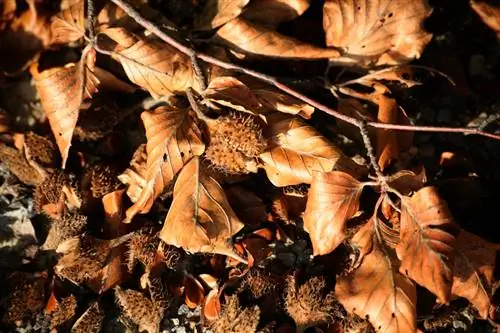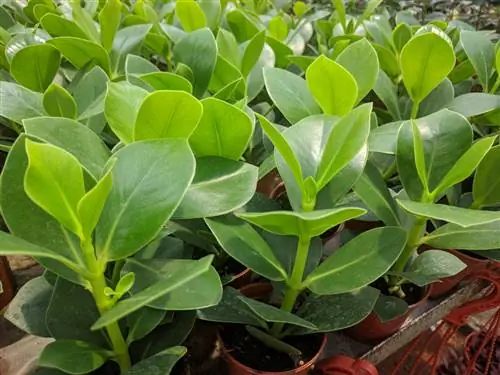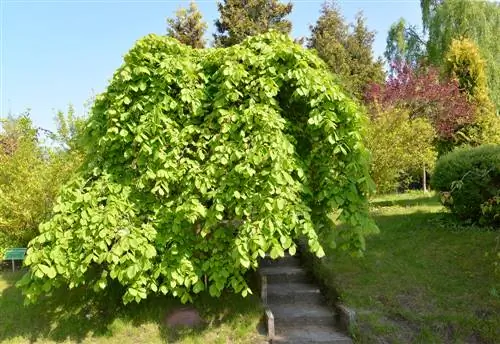- Author admin [email protected].
- Public 2023-12-16 16:46.
- Last modified 2025-01-23 11:21.
Weeping willows are the perfect trees for gardeners who want little maintenance. If it weren't for the pruning, which should be done several times a year due to the rapid growth. No problem for you? Then plant the beautiful deciduous tree on your property. With the tips on this page, care is child's play.

How do I properly care for a weeping willow?
When caring for weeping willows, regular watering is important when the soil is dry, while fertilizing is not necessary. Pruning should be done several times a year, especially if long branches cover neighboring properties or sidewalks.
Care measures
- Pouring
- Fertilize
- Cutting
Pouring
Actually, the weeping willow with its extensive root system accesses enough groundwater. The optimal location is therefore near a garden pond. If your garden has naturally very dry soil, you should water the weeping willow regularly. For once, more is more. Unlike many other tree species, the weeping willow can tolerate waterlogging. Damp or even wet soil is a basic requirement for he althy growth. Especially on hot days, you can easily run a water hose over the substrate for a while.
Fertilize
The weeping willow does not need to be fertilized. Complete fertilizer is not recommended due to intolerance. Compost, on the other hand, can never do any harm. It's best to add a layer of organic fertilizer when you plant the weeping willow in the ground.
Tip
In autumn the weeping willow loses a lot of leaves. Instead of throwing this away, it is best to use the wilted leaves to spread them around the trunk as soil enrichment. This saves work and costs.
Cutting
The weeping willow is extremely easy to care for. It just needs more attention than other trees when it comes to pruning. If you have a sufficiently large property, shortening the branches is not absolutely necessary. You should only use the saw several times a year if the leaves fall on the neighboring property or sidewalks. The same applies when storms threaten to break branches and cause personal injury or property damage. How to cut your weeping willow:
- Choose an overcast, warm day.
- Spring is best.
- Start with the lowest shoots.
- Work from the outside in.
- Remove all brown and old branches
- and all cross-growing branches
- finally trim the supporting branches.
- Feel free to cut the branches back to two thirds of their length.






